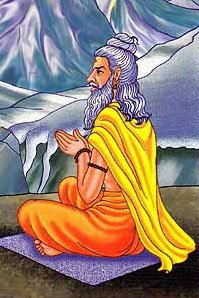Dandabhushita, Daṇḍabhūṣita, Danda-bhushita: 1 definition
Introduction:
Dandabhushita means something in Hinduism, Sanskrit. If you want to know the exact meaning, history, etymology or English translation of this term then check out the descriptions on this page. Add your comment or reference to a book if you want to contribute to this summary article.
The Sanskrit term Daṇḍabhūṣita can be transliterated into English as Dandabhusita or Dandabhushita, using the IAST transliteration scheme (?).
In Hinduism
Purana and Itihasa (epic history)
Source: archive.org: Shiva Purana - English TranslationDaṇḍabhūṣita (दण्डभूषित) refers to “holding a baton in one’s hand”, according to the Śivapurāṇa 2.4.15 (“Gaṇeśa’s battle”).—Accordingly, after Gaṇeśa spoke to Śiva’s attendants: “When thus taunted and rebuked they rushed towards him with big batons, decorating their arms (daṇḍabhūṣita) and taking up different kinds of weapons. Gnashing their teeth, grunting and bellowing and calling out ‘See, See’, the Gaṇas rushed at him. Nandin came first and caught hold of his leg. He pulled at it. Bhṛṅgin then rushed at him and caught hold of his other leg. [...]”.

The Purana (पुराण, purāṇas) refers to Sanskrit literature preserving ancient India’s vast cultural history, including historical legends, religious ceremonies, various arts and sciences. The eighteen mahapuranas total over 400,000 shlokas (metrical couplets) and date to at least several centuries BCE.
See also (Relevant definitions)
Relevant text
No search results for Dandabhushita, Daṇḍabhūṣita, Daṇḍa-bhūṣita, Danda-bhushita, Dandabhusita, Danda-bhusita; (plurals include: Dandabhushitas, Daṇḍabhūṣitas, bhūṣitas, bhushitas, Dandabhusitas, bhusitas) in any book or story.